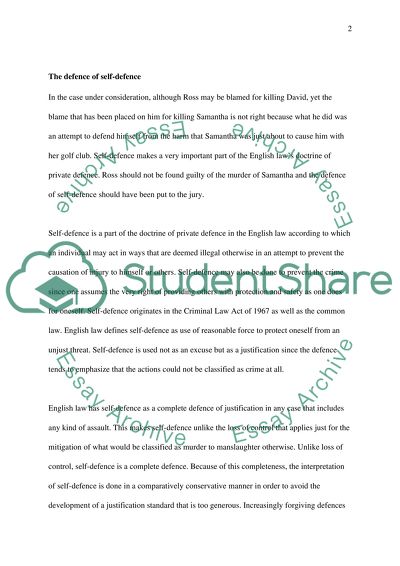Cite this document
(“The defence of self-defence Essay Example | Topics and Well Written Essays - 1250 words”, n.d.)
Retrieved from https://studentshare.org/law/1467500-the-defence-of-self-defence
Retrieved from https://studentshare.org/law/1467500-the-defence-of-self-defence
(The Defence of Self-Defence Essay Example | Topics and Well Written Essays - 1250 Words)
https://studentshare.org/law/1467500-the-defence-of-self-defence.
https://studentshare.org/law/1467500-the-defence-of-self-defence.
“The Defence of Self-Defence Essay Example | Topics and Well Written Essays - 1250 Words”, n.d. https://studentshare.org/law/1467500-the-defence-of-self-defence.


